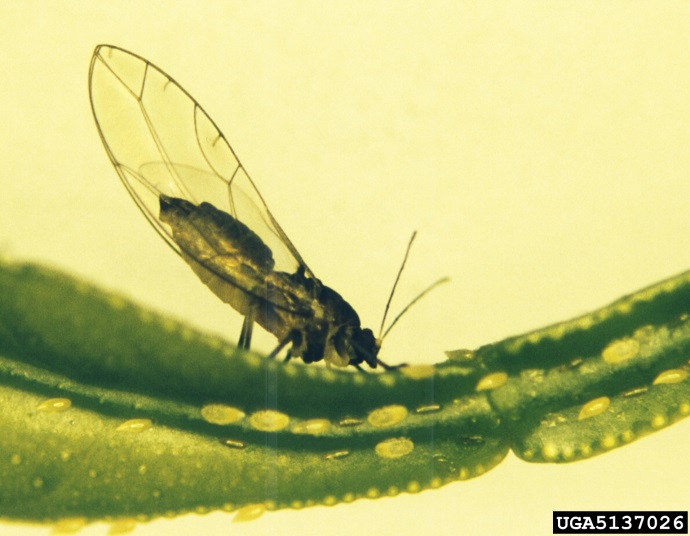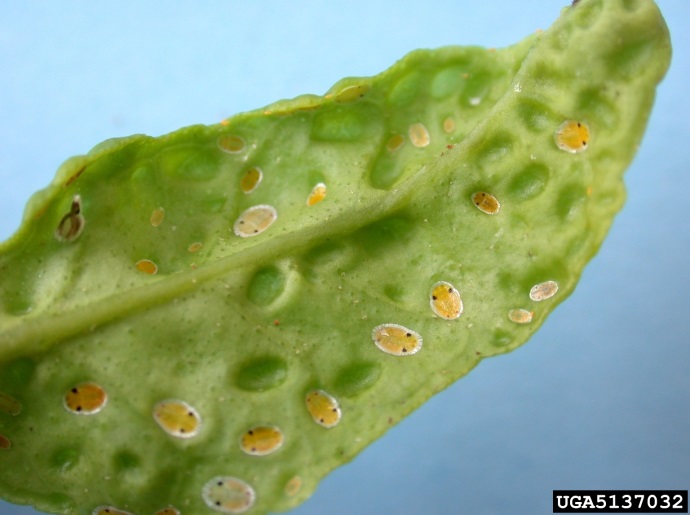
African Citrus Psyllid
| Primefact number | Edition | Published | Author |
|---|---|---|---|
| 1194 | Second | Apr 2017 | Plant Biosecurity and Product Integrity |


African citrus psyllid is a sap sucking insect (Figure 1).
African citrus psyllid can vector both the African and Asian strains of Candidatus Liberibacter which causes huanglongbing.
African citrus psyllid (Trioza erytreae) is an exotic plant pest not present in Australia. This pest is a serious threat to Australia’s citrus industry.
Notifiable status
African citrus psyllid (Trioza erytreae) is a notifiable plant pest in NSW.
All notifiable plant pests and diseases must be reported within 1 working day. You can report notifiable plant pests and diseases by one of the following methods:
- Call the Exotic Plant Pest Hotline 1800 084 881
- Email biosecurity@dpi.nsw.gov.au with a clear photo and your contact details
- Complete an online form
A full list of notifiable plant pests and diseases can be found in Schedule 2 of the NSW Biosecurity Act 2015.
Damage
The feeding activity of the African citrus psyllid nymphs causes pit-like depressions on the underside of the leaves. The feeding pits appear as raised bumps on the top surface of the leaf (Figure 2).
Both adults and nymphs excrete honeydew as white granules. Severely infested branches appear to be dusted with white powder.
Description
Adults
African citrus psyllids are 2.5-4.0 mm long. Females are larger than males. Males and females have clear wings but different shaped abdomens. The female abdomen ends in a sharp point.
Young adults are a pale green colour with black eyes. As they mature their colour changes progressively to a dark brown.
Nymphs
All nymphal stages are small. First instars are 0.3 mm long and fifth instars grow to 1.5 mm long. On moulting to the fourth instar two pale brown spots appear on the abdomen. These darken in the fifth instar.
Eggs
Eggs are smooth, pear-shaped and tiny (less than 0.3 mm long). Eggs are attached to the leaf by a short stalk. Eggs are laid on the shoot tips of the new growth and occasionally on flower buds and young fruit.
Behaviour
After hatching the nymphs move about for a short time before settling and feeding on sap. Once nymphs settle they tend to remain in the same place unless disturbed or are overcrowded.
Nymphs prefer the underside of young leaves and are only found on top of the leaf if nymph numbers are high. Nymphs lie in the feeding pits with only the top of their body and waxy filaments visible.
Adult psyllids have a distinctive feeding posture. They feed with their heads down and wing tips pointing upwards. Their bodies form an angle of 35 degrees with the leaf surface.
Preferred environments are cool moist areas and altitudes over 500 metres. When the weather is hot and dry, eggs and first instar nymphs dry out.
Host range
All citrus plants can be a host of African citrus psyllid.
World distribution
African citrus psyllid is native to Africa. It has spread to islands off the coast of Africa and to Saudi Arabia and Yemen.
Australia is currently free of African citrus psyllid and huanglongbing.
Spread and movement
Long distance spread of African citrus psyllid occurs through the movement of infested citrus plants or plant parts.
Short distance spread can be wind assisted. Adults can fly short distances.

